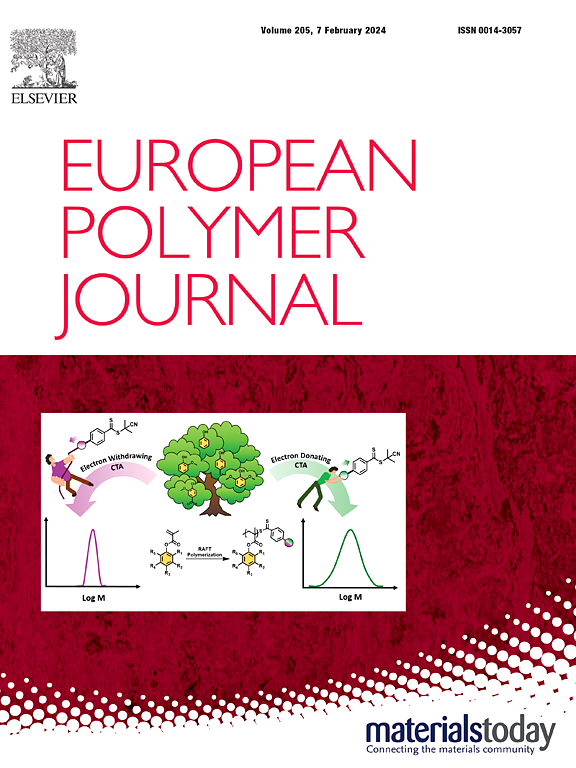Ionic functionalization of poly(styrene-co-butadiene) via catalyst-free click reactions with acid and base-tethered nitrile N-oxides
IF 5.8
2区 化学
Q1 POLYMER SCIENCE
引用次数: 0
Abstract
A catalyst free introduction of ionic functions to solution-polymerized Poly(styrene-co-butadiene) (SSBR) was achieved through successive treatments with nitrile N-oxides that contain either basic (pyridine) or acidic (carboxylic acid) groups. Nitrile N-oxides are known for their ability to undergo selective 1,3-cycloaddition (click reaction) to C = C bonds without requiring a catalyst, making them suitable for solid-state reactions. Functionalization was performed both in solution and by bulk kneading, resulting in a practical conversion of C = C bonds in SSBR, with the degree of conversion controllable in a range of 2 %–16 %. The selectivity of C = C bonds in 1,3-dipolar cycloadditions was analyzed through comparisons with model compounds. The modified rubber demonstrated increased tensile strength and strain, as well as a higher glass transition temperature, compared to the original SSBR. These property enhancements are likely due to the flexible crosslinking between the basic and acidic functional groups introduced by the catalyst-free reactions with nitrile N-oxides. These results suggest that this novel approach has potential applications for graft reactions in the tire manufacturing process.

求助全文
约1分钟内获得全文
求助全文
来源期刊

European Polymer Journal
化学-高分子科学
CiteScore
9.90
自引率
10.00%
发文量
691
审稿时长
23 days
期刊介绍:
European Polymer Journal is dedicated to publishing work on fundamental and applied polymer chemistry and macromolecular materials. The journal covers all aspects of polymer synthesis, including polymerization mechanisms and chemical functional transformations, with a focus on novel polymers and the relationships between molecular structure and polymer properties. In addition, we welcome submissions on bio-based or renewable polymers, stimuli-responsive systems and polymer bio-hybrids. European Polymer Journal also publishes research on the biomedical application of polymers, including drug delivery and regenerative medicine. The main scope is covered but not limited to the following core research areas:
Polymer synthesis and functionalization
• Novel synthetic routes for polymerization, functional modification, controlled/living polymerization and precision polymers.
Stimuli-responsive polymers
• Including shape memory and self-healing polymers.
Supramolecular polymers and self-assembly
• Molecular recognition and higher order polymer structures.
Renewable and sustainable polymers
• Bio-based, biodegradable and anti-microbial polymers and polymeric bio-nanocomposites.
Polymers at interfaces and surfaces
• Chemistry and engineering of surfaces with biological relevance, including patterning, antifouling polymers and polymers for membrane applications.
Biomedical applications and nanomedicine
• Polymers for regenerative medicine, drug delivery molecular release and gene therapy
The scope of European Polymer Journal no longer includes Polymer Physics.
 求助内容:
求助内容: 应助结果提醒方式:
应助结果提醒方式:


